Welcome to North Beach
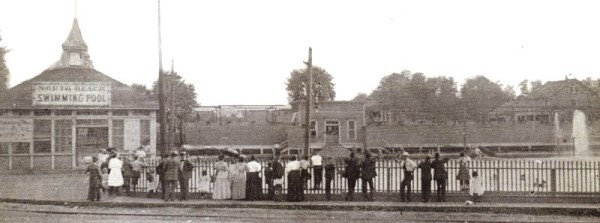
Closed in 1921. It was located on the Northern Queens shore in East Elmhurst.
Locals of the day called that part of Queens "Frog Town". Before the
Grand Central Parkway
paved over the swamps and creeks that separated North Beach from the mainland
- there were so many frogs in residence that the locals often were kept up at
night by the noise. North Beach was originally a resort area built by several
investors including William Steinway. Amusements (including the East Coast's
first Ferris Wheel) came to the resort and were later enclosed in a single
park. North Beach was on Flushing Bay which was connected to both the Flushing
and East River. By the early 1900's both rivers had become so polluted that the
beaches became foul and the sand was replaced with oily mud. Swimmers began
to go elsewhere (or use the pool pictured above). Eventually the amusement park became North Beach's only draw. But the
owners made the ultimate mistake when they decided to replace most of the
pavilions with a
massive beer hall. North Beach became well known for it's
alcohol and was avoided by families who would journey through the vast wasteland
some call Brooklyn, and spend their days at
Coney Island.
Then in 1920 the
Volstead Act was
passed banning the sale of alcoholic beverages and shortly
after the amusement park went bankrupt. It remained closed for several years. When the
Noble
Experiment
ended in 1933 there was talk about reopening the amusement park, but the land
was immediately taken by Robert Moses who suggested that the city could build an
airport there. LaGuardia Airport was, in 1929, a 105-acre private flying field
but eventually all structures of the amusement area were torn down and the beach
was completely filled over.
Ground was broken on September 9, 1937 for a new airport, which was built
jointly by the City of New York and the Federal Works Progress Administration.
It was dedicated on October 15, 1939 as New York City Municipal Airport. On
November 2, 1939, the name was changed to New York Municipal Airport-LaGuardia
Field. On December 2, 1939 the airport was opened to commercial traffic.
In 1947, the year the airport was leased to the Port Authority, it was renamed
LaGuardia Airport. A new Central Terminal Building was opened in 1964, enlarged
in 1967 and again in 1992.
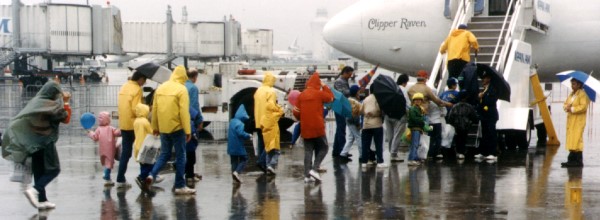
North Beach was one of the first venues catering to a mass market. It was easy
to reach with hourly ferry boats from 92th Street and 129th Street on Sundays.
Trolley service from both the 92nd and 34th Street Ferries was frequent. (The
North Beach resorts were closed by Prohibition in 1920. Today they are buried
under the runways of LaGuardia Airport.)
1894
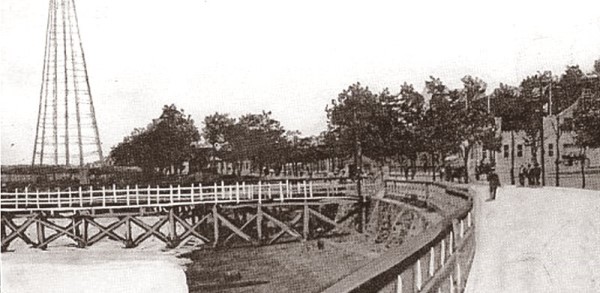
By May, the summer resort season at North Beach was under way and venues of
every description advertised their charms. Silver Spring Park claimed it was the
coolest retreat at Bowery Bay with old shade trees, nicely arranged dancing
pavilions, and picnic grounds. At Sanford’s Point Hotel, which served George
Ehrets Extra Beer on draft, singing societies and chowder clubs were a
specialty. Kohlers New Pavilion had sausage and soda water stands, shooting
galleries and swings, dancing (afternoon and evening), and a band concert at
night. At Henry Daufkirch’s Bay view House and Pavilion, one could enjoy variety
performances by first class talent on Sundays. Muff’s Bowery Bay Boat House was
widely known for its boating and fishing. The North Beach Heights Resort touted
itself as ideal for parties societies and families. The Club House and Grand
Pavilion had choice wines, liquors, and cigars, meals at all hours (severed to
order), and theatrical performance daily (with a change of program weekly). And
finally, the famed Bath Pavilion at North Beach offered 25 tickets for $4,
single tickets at 25 cents, (children 15 cents.) Of course there was a
police presence; in 1899 the
74th sub-precinct was
built.
1911
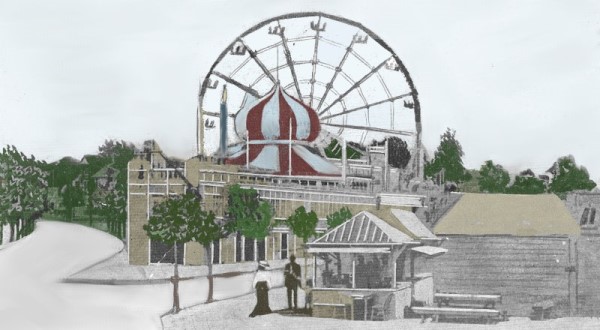
Summer was in full swing with free fireworks at North Beach each Tuesday and
Thursday. Daily shows with Chief Red Eagle and Tribe at the Gala Park! All
trolleys (some
artifacts of which remain) lead to all attractions and amusements!
Someone lit a bonfire near the Grand Pier to chase away mosquitoes. When the
police came, Manhattan toughs used rough house tactics. Samuel Hamberger was
fined $10. Sany Massinni, 16, was arrested after shooting up the place at Old
Bowery Bay Road and Ehret Avenue. Police were suspicious of a victim who placed
a claim that men ‘trimmed him regulation style’ by robbing him of $100 at
Jackson Mill Pond.
From 1917 to 1929 nothing much happens at North Beach. A reporter viewing its
remains wrote 'nominally still in existence but actually long dead.'
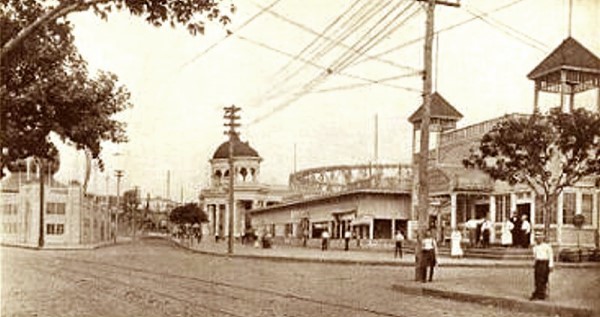
1925
Thousands see North Beach Pier consumed by fire. The dock that was used by ferry
boats in heyday of resort goes up in flames. The inferno attracts thousands who
arrive in automobiles, on foot and by trolley. The Grand Pier, built for the
Bowery Bay Improvement Company by William Steinway and George Ehret, helped make
North Beach into one of the first amusement resorts in New York. Ferries ran to
College Point, East 99th Street in Manhattan, and East 139th Street in the
Bronx. The pier extended 700 feet out into Bowery Bay. It had a massive 300 feet
wide two story pavilion at the shore line. The entire structure is ablaze when
firefighters arrive. Faulty wiring is blamed. A security guard wastes precious
minutes trying to put it out himself.
1929
As Queens experiences its explosive building boom, inadequate transportation
leaves North Beach a deserted hamlet while thousands of homes for commuters are
built further out in Queens Village and Rosedale. When the airport opened on
June 15, and the city proposes an adjoining park, North Beach finally shakes
loose from its sleep. New York Air Terminals Co, a subsidiary of Curtis Wright
Air, purchases the North Beach tract along with 4,000 feet of shoreline. At
about the same time, the city also announces its intent to purchase an adjoining
plot with 2,000 feet of shoreline and 103 acres for a park. Soon its the final
mopping up of the tangled weeds, distorted shanties, bumpy streets and
straggling tidal marsh known as Jackson Mill Creek, but
that park ever
made it off the drawing board. A Sad fate as Javez Dunningham, President
of the Queens Council of Civic Associations in 1930, called it "the most
important park of the Queens Park Plan"
In more recent years - Another amusement park also past into History...
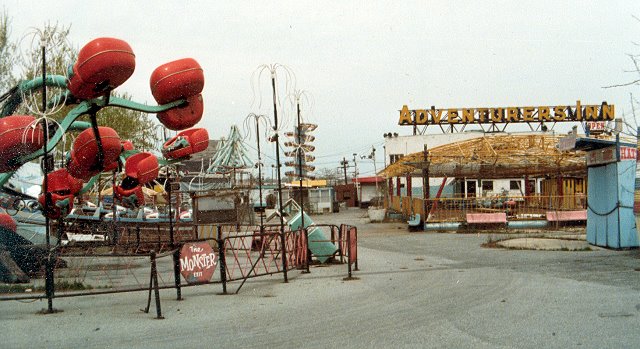
Click here to see more images





